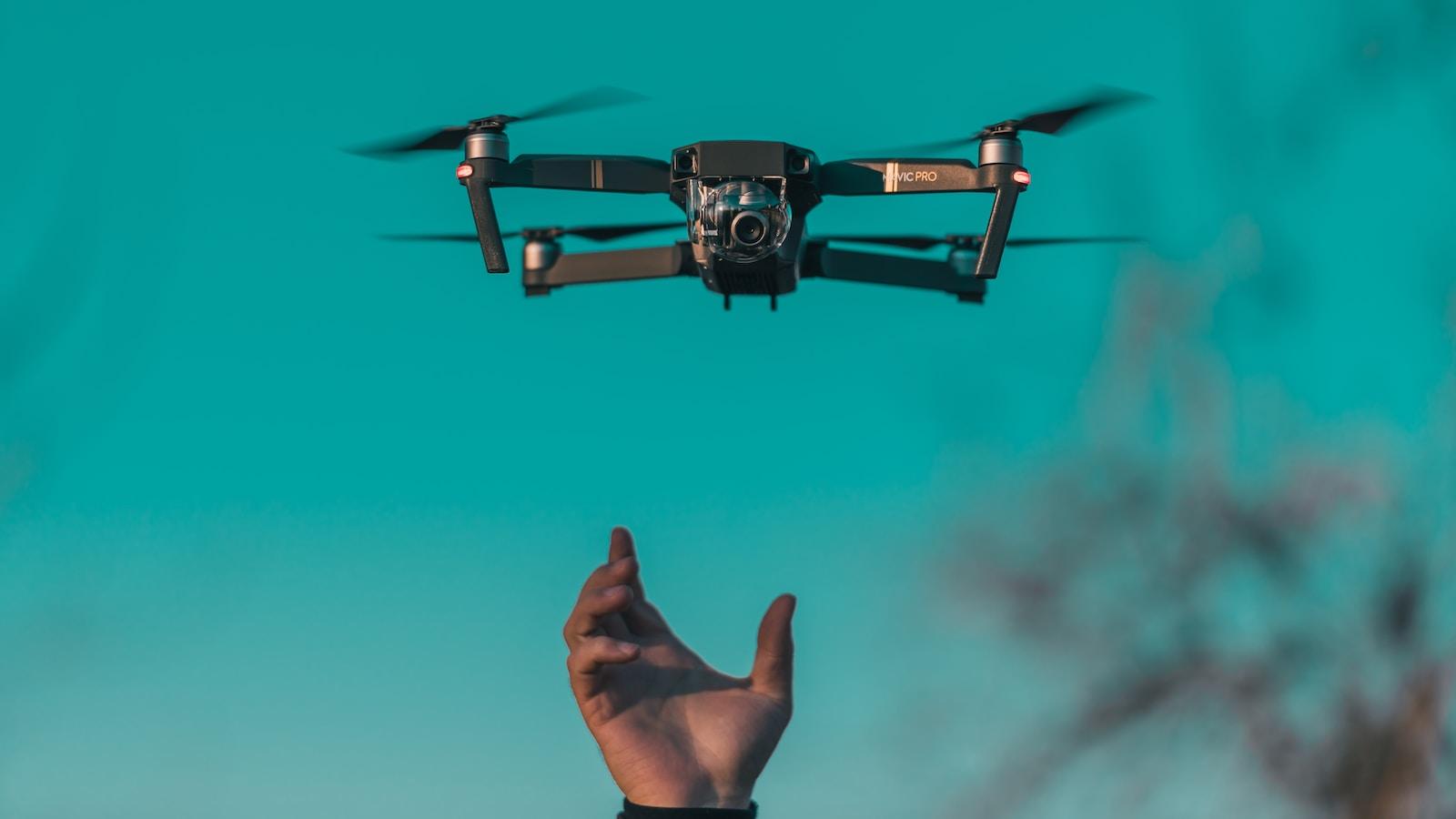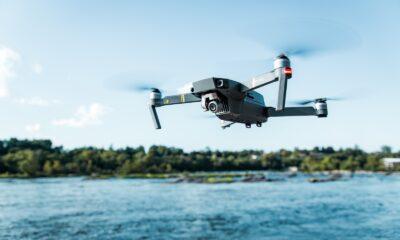Tech
How Far Can a Drone Fly? A Comprehensive Guide to Drone Flight Range

Drones have become increasingly popular in recent years, both for personal and professional use. One of the most common questions asked by drone pilots is how far a drone can fly. In this post, we’ll answer that question and provide a comprehensive guide to drone flight range. Check out a recent podcast on drones!
Factors Affecting Flight Range
There are several factors that pilots need to be aware of when considering flight range.
- Battery Life: The battery life of a drone can significantly affect its flight range. As the battery drains, the drone will become heavier and less efficient, which can lead to a shorter flight time and reduced range.
- Signal Strength: The strength of the signal between the drone and the controller can impact the range of the drone. Interference from other signals, such as Wi-Fi, can also weaken the signal strength and reduce the drone’s range.
- Obstacles: Physical obstacles such as buildings, trees, and hills can interfere with the drone’s signal and reduce its range. It’s important to maintain a clear line of sight between the drone and the controller to minimize these obstacles.
- Altitude: The higher the drone flies, the greater the range will be. However, it’s important to note that there are regulations in place that limit the altitude at which drones can be flown.
- Weather Conditions: Adverse weather conditions such as high winds, rain, and snow can impact the range of a drone. It’s important to check the weather forecast before flying a drone and avoid flying in adverse conditions.
- Drone Model: The make and model of the drone can also impact its flight range. Some drones are designed to fly longer distances and for longer periods than others, so it’s important to choose a drone that meets your specific needs.
By being aware of these factors and taking the necessary precautions, drone pilots can ensure that their drones operate safely and within their expected flight range. It’s important to always follow the regulations and guidelines set forth by your country or region to ensure the safe and responsible use of your drone.
Maintenance Steps for your Drone to Maximize Range
Regular maintenance is crucial for maximizing the flight range of your drone. Here are some good maintenance protocols to follow:
- Keep Your Drone Clean: Dirt, dust, and debris can build up on your drone over time and affect its performance. Regularly cleaning your drone, especially the propellers and motors, can help ensure that it operates at peak efficiency.
- Check the Battery: Regularly check the battery of your drone to make sure it’s functioning properly. Look for any signs of damage, such as cracks or leaks, and replace the battery if necessary.
- Update Firmware: Keeping your drone’s firmware up to date can help ensure that it’s running at peak performance. Check for updates regularly and install them as soon as they become available.
- Check the Propellers: The propellers of your drone are essential for flight, so it’s important to check them regularly for any signs of damage or wear. Replace any damaged propellers immediately.
- Store Your Drone Properly: Proper storage can help extend the life of your drone and its battery. Store your drone in a dry, cool place, and avoid leaving it exposed to extreme temperatures.
- Calibrate Your Drone: Calibrating your drone before each flight can help ensure that it’s properly aligned and balanced. This can help maximize its flight range and prevent crashes.
- Check the Controller: The controller of your drone is just as important as the drone itself. Regularly check the controller for any signs of damage or wear, and replace it if necessary.
By following these maintenance protocols, you can help ensure that your drone operates at peak efficiency and maximize its flight range. Remember to always follow the regulations and guidelines set forth by your country or region to ensure the safe and responsible use of your drone.
Additional Considerations for Drone Flight Range
In addition to the factors and maintenance protocols mentioned earlier, here are some other important things to consider when thinking about the flight range of your drone:
- Type of Drone: Different types of drones have different flight capabilities. For instance, racing drones are typically designed for short-range flights and high-speed maneuvers, while photography drones are designed for longer range flights and stable, smooth flights. So, when choosing a drone, it’s important to consider its flight range and other flight capabilities that match your specific needs.
- Local Regulations: Flight range limits and other regulations may vary depending on your location. It’s important to research and understand the laws and regulations in your area, including the maximum altitude, distance, and other flight restrictions.
- Payload: If you plan to use your drone to carry any type of payload, such as a camera or sensor, this can affect its flight range. It’s important to consider the weight of the payload and the impact it may have on your drone’s battery life and flight capabilities.
- Flight Mode: Different flight modes may affect your drone’s flight range. For example, some drones have a “sport mode” that allows for faster flight but shorter battery life and flight range.
- Additional Equipment: Adding additional equipment to your drone, such as a GPS tracker or range extender, can help enhance its flight range. However, it’s important to carefully research and select these accessories to ensure that they are compatible with your drone and will not interfere with its performance.
By taking these additional factors into consideration, you can make informed decisions about the flight range of your drone and ensure that you’re operating it safely and responsibly.
How Far Can a Drone Fly?
The maximum flight range of a drone will depend on several factors, including the drone’s make and model, the type of battery it uses, and the presence of any obstacles that might interfere with the drone’s signal or GPS. Generally, the average range for most drones is around 4-7 kilometers (2.5-4.3 miles), although some models can fly up to 20-30 kilometers (12-18 miles).
How Far Can You Fly a Drone?
As a general rule, you should never fly a drone beyond your visual line of sight, which is typically around 500 meters (1640 feet). Additionally, there are regulations in place that limit the maximum range of drones, depending on their weight and intended use.
How Far Can a Military Drone Fly?
Military drones, also known as unmanned aerial vehicles (UAVs), are designed to fly longer distances and for longer periods than consumer drones. The range of a military drone will depend on its make and model, as well as its intended use. For example, the General Atomics MQ-9 Reaper, which is one of the most widely used military drones, has a maximum range of up to 1,850 kilometers (1,150 miles) and a maximum flight time of up to 27 hours.
How Far Away Can You Fly a Drone Legally?
The maximum range of a drone will depend on the country and the regulations in place. In the United States, for example, the Federal Aviation Administration (FAA) requires that all drones be flown within the pilot’s visual line of sight, and that they not be flown higher than 400 feet above ground level. Additionally, there are restrictions on flying drones near airports, national parks, and other sensitive areas.
How Far Can a Drone Fly from the Controller?
The maximum distance a drone can fly from its controller will depend on the type of controller being used, as well as the strength of the drone’s signal and GPS. Most consumer drones can fly up to 7 kilometers (4.3 miles) from their controllers, although this range can vary depending on the model and environmental conditions.
How Far Can a Police Drone Fly?
Police drones, like military drones, are designed to fly longer distances and for longer periods than consumer drones. The range of a police drone will depend on its make and model, as well as its intended use. Generally, police drones can fly up to 10 kilometers (6.2 miles) from their controller, although this range can vary depending on the model and environmental conditions.
How Far Can I Fly a Drone?
The maximum range of a drone will depend on its make and model, as well as the regulations in place in your country or region. As a general rule, you should never fly a drone beyond your visual line of sight, and you should always follow any local regulations and guidelines.
How Far Away Can a Drone Fly from Its Controller?
As mentioned earlier, the maximum distance a drone can fly from its controller will depend on the type of controller being used, as well as the strength of the drone’s signal and GPS. In general, most consumer drones can fly up to 7 kilometers (4.3 miles) from their controllers.
How Far Can a Drone Fly Away from You?
The maximum range of a drone will depend on its make and model, as well as the regulations in place in your country or region. As a general rule, you should always keep your drone within your visual line of sight, which is typically around 500 meters (1640 feet) in most countries. This not only helps you maintain control of your drone but also ensures the safety of other people and objects in the area. However, some drones come with additional features such as GPS tracking, which allows them to be flown beyond the pilot’s line of sight while maintaining a stable connection with the controller. In any case, it’s important to always follow the regulations and guidelines set forth by your country or region to ensure the safe and responsible use of your drone.













